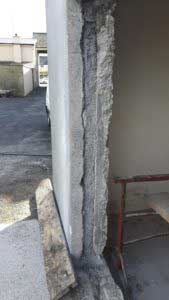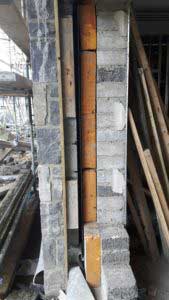19 Feb Board Versus Bead
I read this article in the Self Build magazine (Spring Edition) and its well worth a read…..
Board Versus Bead
In NI and ROI partial fill cavity wall insulation is widely considered to be the most traditional wall construction build up. The cavity is there to reduce any risk of unwanted moisture soaking through the external wall. In a bid to reduce heat loss cavities are now built wider than they used to be to allow for the insulation to be installed within them. If you insulate inside the cavity you will reduce the need to insulate on the inside of the house or externally.
Boards
For current standard construction detailing a typical wall build would consist of a brick or block outer leaf, 40mm clear cavity, 80mm insulation, 100mm block inter leaf and internal plaster. The insulation is then protected in the cavity and is installed by the block layer as the builder builds the walls.
Housing standard have improved over the past two decades and so have insulation products. PIR insulation boards have replaced polystyrene because PIR has a much lower conductivity which means you can achieve the same insulation value with less thickness. Phenolic foam is better again.
A 150mm cavity with 110mm PIR can easily meet the current building regulations and achieve a U-value as low as 0.18 W/sqmK as outlined in the new ROI Part L building regulations coming into force this year. This means an insulated slab on the inter leaf of the wall is not required to boost the U-value. This in turn has the benefit of maximising the thermal mass, (masonry’s ability to store and slowly release heat), in the building.
While partial fill insulation makes a lot of sense and can be very cost effective, it is difficult to get 100 per cent right. To achieve the calculated U-value, which measures heat loss, the insulation must be tight against the inside leaf. Any air gap between the insulation and the wall on the warm side of the cavity causes thermal looping. Thermal looping happens when there is an air gap between the insulation boards and the inter leaf of block-work – This leads to heat being drawn from the inside of the house into the cavity.
This considerably reduces the effectiveness of the insulation, which was carried out in the early 1990’s shows that a 5mm air gap causes a 35per cent reduction in insulation effectiveness, 10mm a 93 per cent reduction and 15mm a 180 per cent reduction.
These are alarming results. If a wall is designed to meet a U-value of 0.21 W/sqmK, the actual U-value with 10mm gaps would be 0.4W/sqmk. This does not even come close to complying with the building regulations. 80mm PIR will achieve 0.21 W/sqmK but with a 10mm gap it is the equivalent of 40mm PIR. A 5mm gap would be well within a block layers tolerance for accuracy but considering mortar droppings and small pieces of aggregate falling into the cavity, less that 10mm is hard to maintain. This is a widely recognised problem and manufacturers have tried to address it with tongued and grooved insulation boards and full fill solutions (straight edge sheets installed on top of each other). This means that a 150mm board is added to the 150mm cavity as the block layer builds the wall. This leaves no tolerance for the block layer and the cavities must be kept spotlessly clean. When there is an obstruction in the cavity, it is easier to cut out a piece of insulation than to take down the wall and remove the obstruction, which can lead to more thermal looping.
Beads
Many people are now opting for pumping the cavity walls with bonded EPS beads after the wall is built rather than relying on the block layer to put the insulation in as he goes. This also requires that cavities are kept clean but with a 150mm wide clear cavity there is much more space to maintain a clean cavity.
EPS Bonded Bead Insulation
- Walls can be built faster
- Easier to keep the cavity clean
- No risk of Thermal Looping
- Fully fills the cavity to ensure insulation continuity.


Bead in Wall Board in Wall

